How Nursing Insights Helps Hospitals Support Nurses
It’s never been more crucial to support nurses.
The turnover rate for hospital-based registered nurses was 27.1% in 2021 – up from 18.7% in 2020, according to a NSI Nursing Solutions Report. Patient acuity is up, and persistent staff shortages mean that most hospital nurses are juggling heavy workloads under significant stress.
Nurses need – and deserve – institutional support and access to tools that make their work easier. The SwipeSense Nursing Insights application helps nurses implement and sustain two evidence-based practices proven to benefit nurses (and their patients): Purposeful Hourly Rounding and Bedside Shift Reporting.
Purposeful Hourly Rounding
The benefits of purposeful hourly rounding are well-known. Hourly rounding by nursing staff saves time and delivers better patient outcomes. One study that examined the impact of purposeful nurse rounding found that rounding every hour (during the day) or two hours (at night):
- Decreased patient calls for assistance by 40%
- Decreased patient requests for repositioning by 29%
- Decreased calls due to IV or pump alarms by 40%
- Decreased patient calls for pain management by 40%
- Decreased patient falls by 52%
- Decreased skin breakdown by 14%
The Agency for Healthcare Research and Quality (AHRQ) lists scheduled hourly rounds as a Best Practice in Fall Prevention, and the Institute for Healthcare Improvement (IHI) has endorsed hourly rounding as the best way to reduce fall injuries and increase both the quality of care and patient satisfaction.
But despite proven benefits, many hospitals struggle to institute and maintain purposeful hourly rounding, in part because doing so essentially “entails asking staff to reorganize and approach their work in a completely new way,” as noted by an American Nurse article.
Frontline nurse involvement is crucial to the success of purposeful hourly rounding. Hospital leadership cannot simply direct nurses to perform hourly rounding; clinical nurses must be involved in planning and implementation. Electronic nurse rounding software – particularly real-time location system (RTLS)-based systems that autonomically monitor staff movement without requiring extra input – can help nursing staff understand their usual patterns of nurse/patient visits. They can use this information to set goals and streamline workflows to ensure that patient needs are met during regular rounds.
SwipeSense Nursing Insights
The SwipeSense Nursing Insights application includes an easy-to-read dashboard that reflects unit and individual compliance with hourly rounds, so leadership and staff can see where improvements are needed (and deploy extra staff or support, as needed). According to a KLAS Research report, clinical staff say that digital rounding tools help them adjust their practice patterns. Nearly 60% of hospitals that implemented patient rounding technology experienced improved patient satisfaction.
The SwipeSense Nurse Rounding Monitor, which delivers real-time rounding data to frontline staff, complements Nursing Insights, and enables staff to quickly adjust to evolving situational needs.
Bedside Shift Reporting
Bedside shift reporting, a change-of-shift report that occurs at the bedside and includes the patient, off-going, and oncoming nurse, can decrease nurse overtime, increase time available for patient care, and decrease medical errors. Nurses who work at hospitals that have shifted from traditional change-to-shift report to bedside shift reporting site improved efficiency and increased ability to prioritize care.
Nursing Insights also tracks bedside shift reporting. Because it automatically detects staff presence in patient rooms, busy nurses don’t need to manually record bedside shift reports. They can review and track their performance via a visually engaging digital dashboard. This feedback encourages and supports nursing staff as they adopt bedside shift reporting.
Purposeful hourly rounding and bedside shift reporting are two powerful strategies that nurses can use to organize their care and improve workflows. Digital tools that monitor rounding and bedside shift reporting help nursing staff effectively deploy and sustain these two evidence-based practices.
